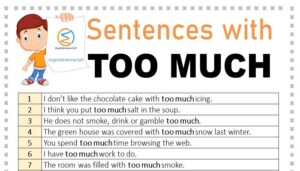Pun Figure of Speech (Examples & History)
Pun Figure of Speech
Pun
It was first known use in 1644.
Definition
- A joke based on the interplay of homophones, words with the same pronunciation but different meanings. It can also play with words that sound similar, but not exactly the same. The joke’s humor (if any) comes from the confusion of the two meanings.
- The usually humorous use of a word in such a way as to suggest two or more of its meanings or the meaning of another word similar in sound.
History
The Greek term is paronomasia; other names are calembour, clinch, quibble and carwitchet. One of the earliest types of wordplay, the pun is wide-spread in many literatures and give rise to a fairly universal form of humour.
Examples
The pun consists in a play on the various meanings of a word and is seldom used except for jest:-
- “Can the Ethiopian change his skin, or the leopard its spots?
- Yes; the leopard changes its spots, whenever it goes from one spot to another.
- “Is life worth living?” “That depends upon the liver.”
- “He kept his spirits up by pouring spirits down.”
- “Darkness set in and the worthy knight found himself benighted indeed.”
- “He is wealthy, and though he is a boor I love him for his charming manors.
Pun Examples in Literature
1 – “Ask for me tomorrow, and you shall find me a grave man”.
Shakespeare, Romeo and Juliet
2 – “I have a sin of fear, that when I have spun
My last thread, I shall perish on the shore;
But swear by Thy self, that at my death Thy son
And having done that, Thou hast done;
I fear no more
Hymn to God the Father
Here ‘Son’ means both Christ and ‘the sun’, and the word ‘done’ is a pun on the poet’s name.
3- A pun form known as asteismus involves a reply to earlier words used in a different sense. This example occurs in Cymbeline (II, i):
CLOTEN: Would he had been one of my rank!
LORD: To have smell’d like a fool.
4- In Act III of “Othello” by Shakespeare, the conversation between Desdemona and clown is best example of Pun:
DESDEMONA. Do you know, sirrah, where Lieutenant Cassio lies?
CLOWN. I dare not say he lies anywhere.
DESDEMONA. Why, man?
CLOWN: He’s a soldier, and for one to say a soldier lies, ’tis stabbing.
Here the Clown plays on the double meaning of the word lies. Desdemona means ‘where does Cassio sleep’ (as in ‘lie down’). The Clown knows this, but toys with Desdemona by deliberately mishearing her. When he says ‘to say a soldier lies, ’tis stabbing,’ he means that to say a soldier tells lies is insulting to his honor.
Further Reading
- Metonymy vs Synecdoche
- Synecdoche Examples in Literature
- Figures of Speech with Examples
- Antithesis Examples in Literature
- Euphemism Figure of Speech
- What is a simile in literature? How to write a good simile?
- Types of Metaphor with Examples
- Apostrophe as a Figure of Speech
- Personification with Examples
- Hyperbole Definition and Examples
- Fable Meaning and Examples in Literature
- What is Epigram in Figure of Speech?






